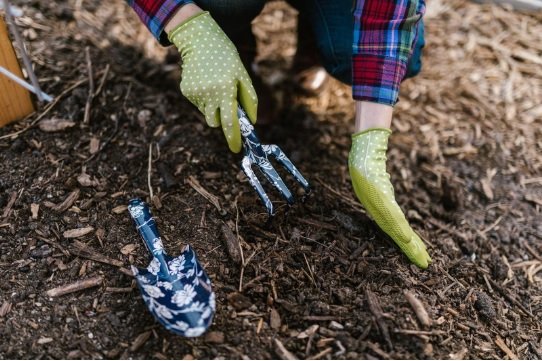Gardening is a wonderful way to connect with nature and promote mental well-being. When you think of a Japanese garden, what image comes to mind? Most likely, you envision a tranquil oasis of simplistic beauty, showcasing a harmonious blend of rocks, water, and greenery. It requires patience, dedication and the right tools. Japanese gardening tools are known for their exceptional quality and timeless design, having been perfected over centuries. The craftsmanship behind these tools is a testament to Japanese culture, heritage and reverence for the natural world. In this blog, we will explore the history, beauty and function of Japanese garden tools.
Craftsmanship and Design
Japanese garden tools are steeped in centuries of tradition, reflecting a deep respect for nature and the art of landscaping. These tools evolved from the agricultural implements of ancient Japan. Over time, they became more refined, incorporating elegance and craftsmanship. For example – The Japanese left-handed garden tools – a thoughtful solution that caters to the needs of left-handed enthusiasts. These tools are crafted from high-quality materials and are created with precision and care. One of the defining characteristics of Japanese garden tools is their simplicity – they are not overly ornate but rather incorporate minimalist aesthetics. This simplicity puts the focus on the beauty of the garden and makes the tools easier to use. They are designed to blend in with the garden environment, creating a harmonious balance between man and nature.
The production of Japanese garden tools
Forging and Materials: Japanese garden tools are often hand-forged by skilled artisans. The choice of materials, such as high-quality steel, ensures durability and precision. Traditional techniques are employed to create blades that are sharp, resilient, and capable of intricate cuts.
Ergonomic Design: The design of Japanese garden tools prioritizes ergonomic comfort. Handles are crafted to fit naturally in the hand, enabling gardeners to work with precision and ease. This ergonomic consideration reflects the value placed on the relationship between the tool and the user.
Aesthetic Beauty: Beyond functionality, Japanese garden tools exhibit a unique aesthetic beauty. Many tools feature clean lines, minimalistic designs, and refined details. This attention to aesthetics reflects the broader cultural appreciation for the subtle beauty found in simplicity.
Patina and Aging: Over time, these tools develop a distinctive patina that bears witness to their history of use. This patina is not merely a sign of wear but a testament to the enduring relationship between the tool and the gardener.
History and Culture
The history of Japanese garden tools goes back to the Edo period (1603-1868) in Japan. During this time, gardens were seen as a place of retreat and reflection, and their design and maintenance were considered an art form. It is during this period that the tools for maintaining such gardens were perfected, and the tools that we know today developed. The cultural significance of Japanese garden tools extends beyond their use – the tools’ design and craftsmanship are celebrated as works of art.
The Different Kinds of Japanese Garden Tools
There are many different types of Japanese garden tools, but some of the most popular include the Hori-Hori knife, the Bonsai scissors, and Transplanting Garden Knife. The Hori-Hori knife is an all-purpose knife that is perfect for digging, planting, and weeding. Bonsai scissors are perfect for trimming and shaping bonsai trees, and the Transplanting Garden Knife is great for weeding in tight spaces.
Philosophy of Japanese Garden Tools
The craftsmanship of Japanese garden tools is rooted in a philosophy that emphasizes the importance of simplicity, patience, and attention to detail. Using these tools requires a certain level of mindfulness and focus. It’s about taking your time and being careful with every cut, every pruning, and every stroke. This approach is a reflection of the Japanese approach to life – a pursuit of simplicity and perfection, in everything we do.
Conclusion
Japanese garden tools are more than just functional tools – they are a testament to the craftsmanship, history and heritage of Japan. They embody a harmony between man and nature, reflecting the importance of balance, elegance and function. The art of Japanese gardening is a window into a cultural legacy that has been perfected over centuries. By using these tools, we can connect with nature on a deeper level, and develop a greater appreciation for the beauty and splendour of the natural world. If you’re looking for a higher level of craftsmanship and beauty in your garden tools, look no further than the mastery of Japanese garden tools.

